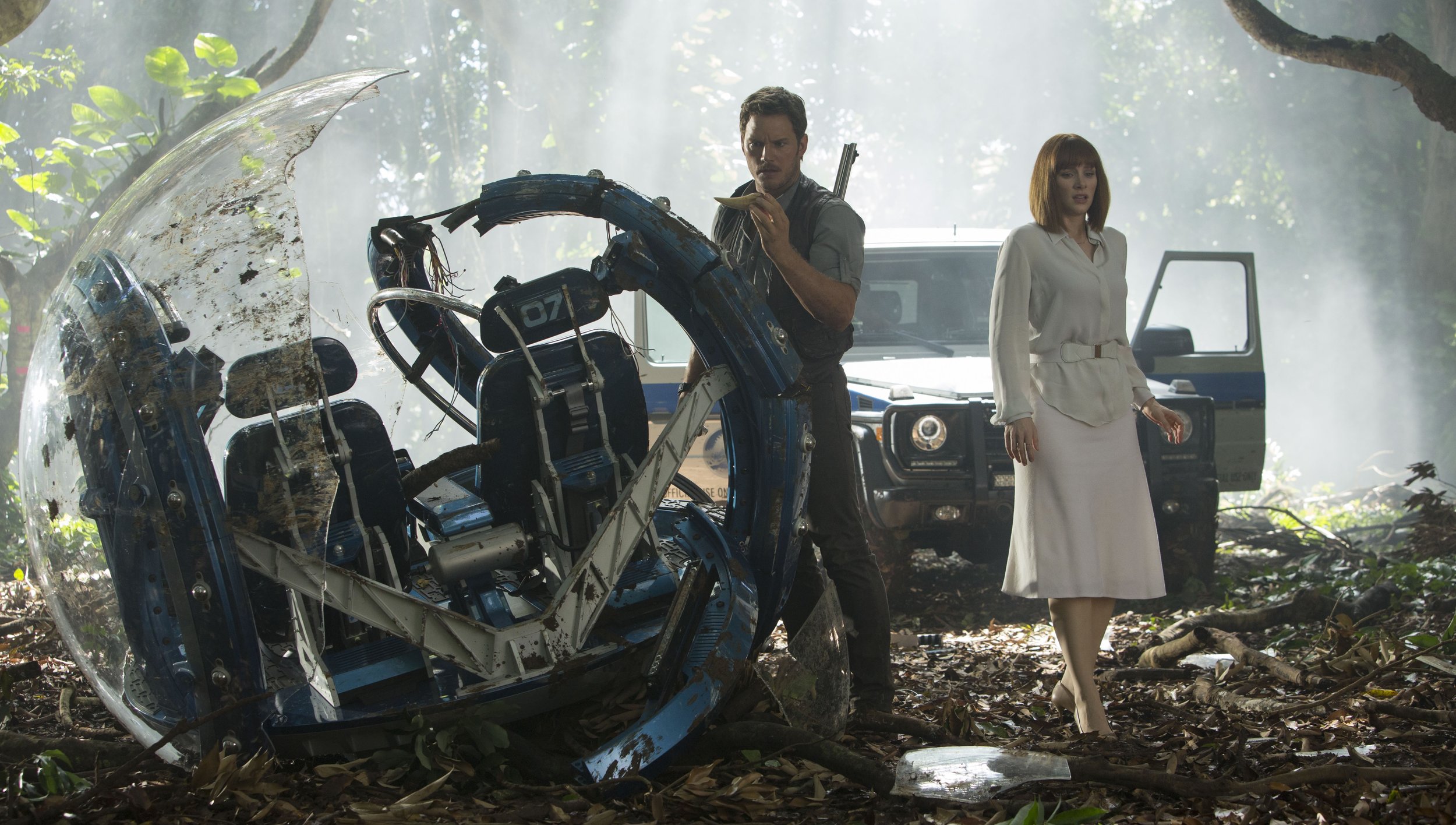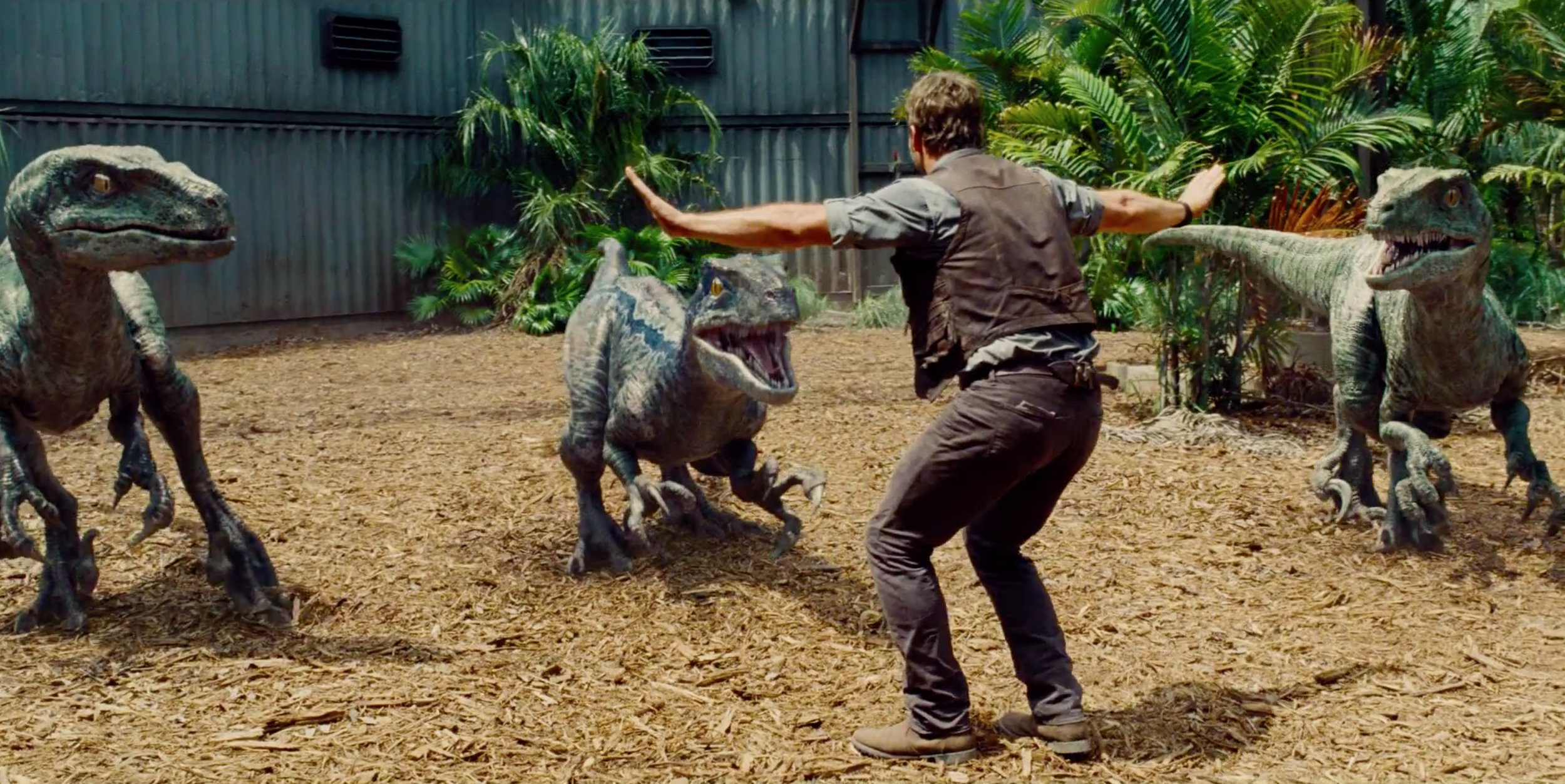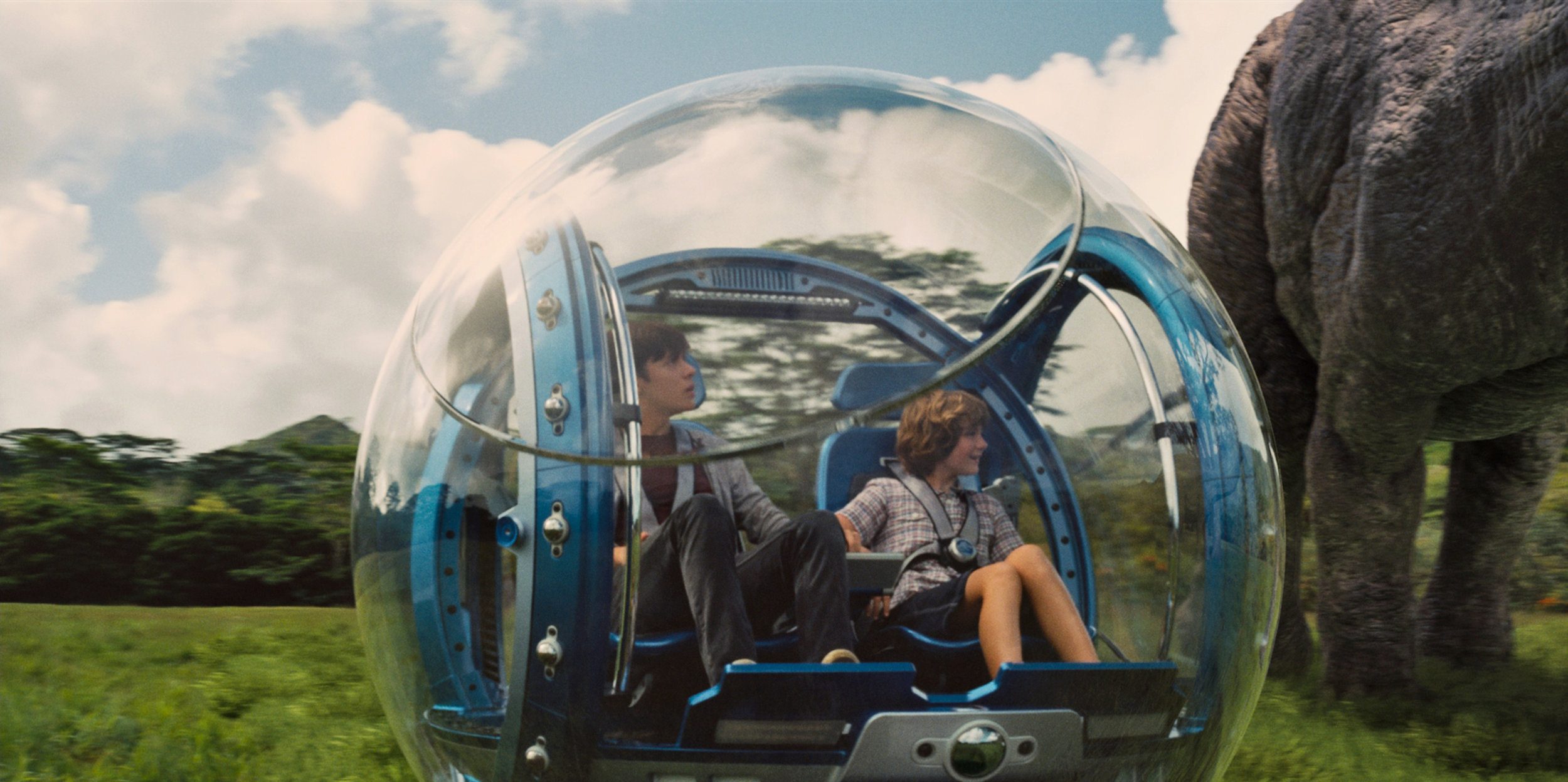REVIEW: 'Jurassic World'
A ripple in a glass of water. The tap of a scythe-like claw on a kitchen floor. In the original Jurassic Park, it’s little touches like these that pull you into the room with Lex and Timmy and match them breath for terrified breath. It’s filmmaking that can make even the most cynical viewer wonder if these cute kids are the next casualties of a capitalist experiment gone horribly awry.
Of course, the first film in the franchise isn’t a non-stop fright fest. One of the reasons Jurassic Park became such a classic is how it fuses life-or-death chases with moments of pure awe. Early on, when Dr. Alan Grant (Sam Neill) and Dr. Ellie Sattler (Laura Dern) look up at a Brachiosaurus for the first time, we share their speechless amazement, marvelling at the unknowable size and yet familiar behaviour of these animals. In fact, the expressions on their faces have since become one of Steven Spielberg’s most reliable ways of pulling us into a scene.
In the new sequel Jurassic World, director Colin Trevorrow seems to understand that a blend of these two primordial emotions, awe and terror, is how to make one of these films come alive. And while he and his writing team aren’t successful one hundred per cent of the time, Jurassic World is a much more effective ride than either of the middling sequels that precede it (as much as I like certain scenes from both of them). Given the enormous scrutiny the film has been under in the 14 years that the film has been fighting its way through production, that’s a win of prehistoric proportions.
This fourth film is an answer to a question that’s been playing in the minds of fans ever since the first installment: what would happen if the park actually opened? Jurassic World takes us to a Disney-sized resort on Isla Nublar, spread over huge swaths of territory, visited by over 20,000 people per day. Surprisingly, the park seems to be a success: accidents are rare, and the public seems to feel very safe forking over what’s likely an obscene amount of cash to get in.
Overseeing operations is Claire (Bryce Dallas Howard), an icy workaholic who’s been asked to look after her two nephews Zach and Gray when she invites them for a VIP tour. Sadly, Claire’s main priority is the park’s investors, who are looking to boost profits with the introduction of a frightening new attraction: the Indominus rex, a hybrid dinosaur that already looks like too much to contain.
What happens next shouldn’t be much of a surprise for anyone who’s watched a Jurassic Park movie. The I-rex escapes and rampages across the island, and it’s up to Claire and her raptor-training colleague Owen (Chris Pratt) to stop the dinosaur before it can find the delicious humans who tried to cage and gawk at it.
Universal Studios made an intriguing choice when they picked Trevorrow to helm such a high-profile film. Indie sci-fi fans would recognize the director from his charming 2012 film Safety Not Guaranteed, and Trevorrow was clearly able to draw on the earnest, dreamy qualities of that film to power the Spielbergian wonder of the kids exploring the new park. However, the director’s previous work also holds him back: Trevorrow seems less comfortable with the tense, nail-biting sequences that are essential to the series. The director is too quick to either cut away to another storyline, or to inject some chaotic action, when a little more suspense would have been the better route.
Jurassic World also can’t escape the sense it’s been chewed up and spit out in several rounds of re-writes. The fact that the screenplay credit is shared by four people is never an encouraging sign; the film ends up with maybe 3-4 characters too many, meaning every role ends up thinning out as a result.
Pratt’s Owen is like the ideal mix of fan-favourite characters Alan Grant, Ian Malcolm and Muldoon, and we don’t get enough of him. Gray is a remix of know-it-all Timmy from the first film, while his teen brother Zach is reduced to ogling every girl he sees. Howard’s Claire is a good foil for Pratt, but they only get a few brief chances at chemistry. It makes you long for a steady hand like that of David Koepp from the first film, working with novelist Michael Crichton to adapt a source novel.
Crucially, Jurassic World never succumbs to the biggest faults of the sequels that came before. It doesn’t feel the need to tack on a preposterous coda involving a T-rex roaming around downtown San Diego (The Lost World: Jurassic Park), or to lower the stakes of the film down to an annoying divorced couple trying to rescue their son (Jurassic Park 3). The flaws in Jurassic World are more like areas for improvement, instead of failures. Like a paleontologist, the series is dusting off the bones of the first film, re-discovering what it used to be, and hopefully sketching a fuller picture as more films get made (because let’s be honest, the box office speaks for itself).
The only uncertainty is where the series can go next. After a “containment anomaly” like the one in this film, it’s unlikely we’ll be seeing the park open up in time for the next release. And if the Jurassic movies rely on a functional park to hit that sweet spot that combines awe and panic, corporate critique and ethical quandary, the producers may have some work to do to sell us on the next walk in the park. Until then, Jurassic World gets three stars out of four.
What did you think of the newest addition to the Jurassic Park series? Did it live up to the 14 years of hype, or do you suspect that the magic of the original is permanently out of reach? Join the discussion in the comments section, and if you liked this review, share it with your friends and followers!




